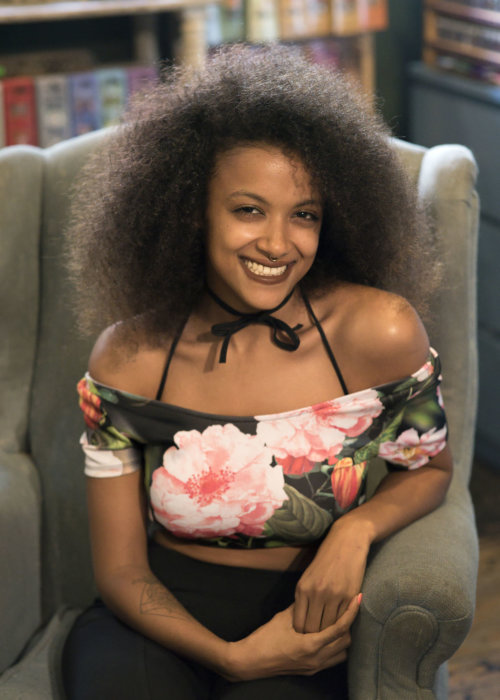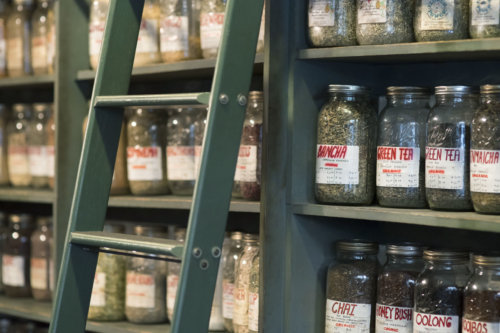
Haylin Belay On Practicing Witchcraft in NYC
In Search of a Greener New York is an ongoing Garden Collage series of explorations about sustainability efforts in New York City and beyond– including the people, places, and ideas that are making Manhattan a healthier, happier place to live. In this column, we spotlight individuals who are making New York a “greener” place in an attempt to discover how, exactly, they are doing it. This week, GC spotlights Haylin Belay– sex educator, witch, and Leo– talks to us about how practicing magic in the 21st century is not just a spiritual practice, but a political one as well.
There is an enduring image of witches that often neglects the more subtle intricacies of the craft. The idea of witches and witchcraft typically evokes women (whether in this century, or centuries ago) dancing naked by moonlight in some unnamed field, far past the middle of nowhere, with the heady scent of herbs and smoke in the air. In pop culture, that impression is further simplified into women casting bits of exotic organic matter into flames or solid cauldrons, chanting spells from a book under their breath.
For some witches, this vision isn’t far from the truth. But in recent years, the witchcraft landscape has begun to accommodate a more modern interpretation of witchcraft, one adapted to the trials and stressors of the 21st century. Haylin Belay, a sex educator living in New York, is among this new generation of witches and writes a newsletter, My Feminism Involves Witchcraft, to that effect. (In her own words, the newsletter comprises “simple instructions and resources for young urban witches seeking to explore their feminism and their witchcraft.” The letters feature musings, spells, and rituals alongside DIYs like how to grow your own magical herb garden for under $20.)
The newsletter, which Belay started last year, was recently picked up by Buzzfeed and has an audience of both magic and non-magic folk. “It seems to me that people need a way to practice self care that has a kind of mystic or esoteric element, one that helps them to understand themselves as powerful,” Belay observed. In addition to feeling more in touch with the earth and nature, she sees power– and affirming power– as an essential part of her practice, especially in today’s social climate. “Most rituals start with a practice of raising your energy and that’s usually just meditating on this idea that: ‘I have power within me; I can use that power to effect change in the world’,” Belay explained. “As a woman– and as a black woman, specifically– just conceptualizing that, manifesting that, speaking those words is itself an enormously political act and brings me an enormous amount of solace.”
To make magic more accessible, Belay tends to focus her newsletter around how to use common natural ingredients you might have lying around your house (like black pepper and thyme), and offers easy, unassuming approaches to witchcraft, like bath magic (which involves performing rituals during baths) or kitchen magic (which encompasses rituals and spells performed around eating). “[Kitchen magic is] really one of the first places where I learned what magic was– without using the word magic,” Belay clarified. “Ethiopian food culture is very, very deep and traditional, and comes with a lot of connotations beyond just the material things that are on the stove or on the plate…[Kitchen witchery is] a huge place where I take time to take care of myself and think about the ritual meaning of what it is to go to the farmers market, pick out the ingredients, take them home, wash them, cook them, prepare them with intention, and use specific herbs and spices that have certain energetic meanings or properties.”
But in New York, closeness with the earth and its flora isn’t always feasible or easy. “We don’t get many opportunities to be in green spaces…I get a lot of out of reminding myself that I’m connected to the earth and I’m connected to nature,” Belay admitted. “Finding ways to access that, when you live in an urban space, that’s something that I’m always thinking about.” In her newsletter, Belay often encourages readers to seek out a closeness to nature whenever possible, whether that’s performing rituals outside or simply sitting by a window with sun. Yet Belay also hopes to make her practice more forgiving, acknowledging, “At the end of the day, the urban environment is an equally important environment to connect to.”
Of course, even with witchcraft becoming increasingly common, there are still many who are skeptical of witchcraft. Belay’s take? “A lot of times, on dates, I’ll get questions from guys being like, ‘Oh, witchcraft– are you really into that? Is it “for real“?’ The place I always go with that is: it really doesn’t matter if it’s real. It really does not matter if it’s literally, actually True with a capital T. As an anthropologist, a huge part of what I unlearned in my years of studying was the idea that there is some kind of singular, objective truth. What there is is lived experience, there’s material conditions, and there’s also this very hard to define and pin down subjective experience of the world. In my subjective experience of the world, witchcraft is useful, it’s helpful to me, and it actively contributes to my quality of life. I’ve long since given up any attachment to the idea of ‘real’ or ‘true’ or ‘authentic’.”



































